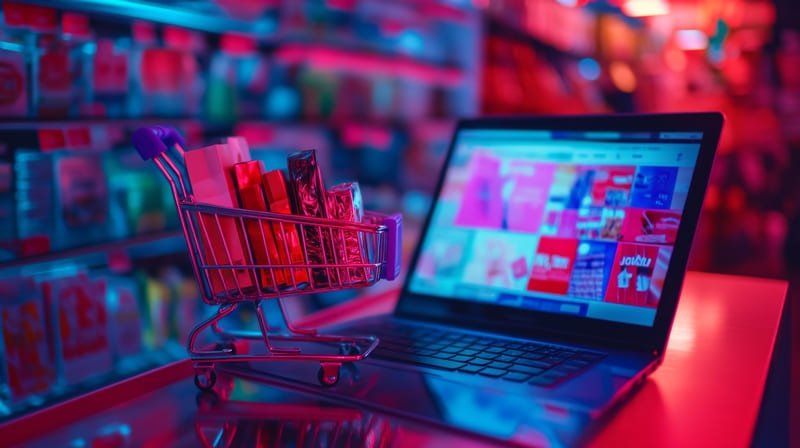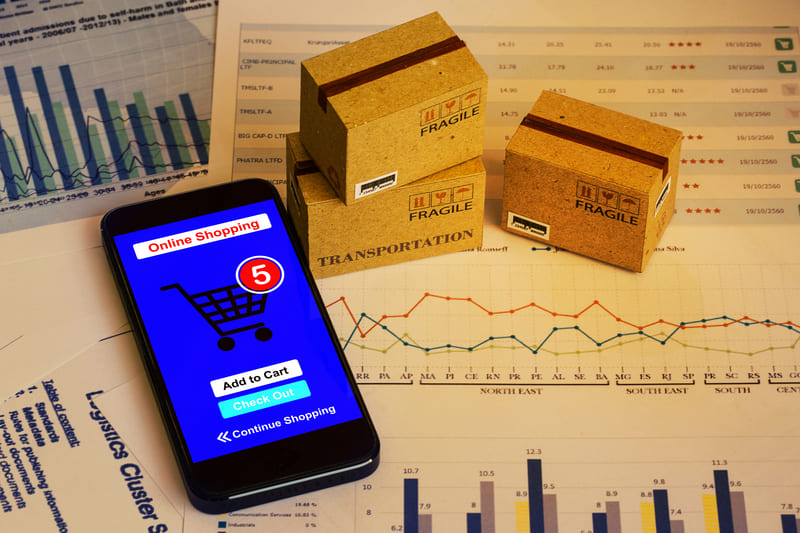The Ultimate Guide to CPG Website Design for Modern Brands
Modern CPG brands share two important traits: they are customer-driven and digital-first. They prioritize clean design, strong storytelling, and creative messaging to succeed in a saturated market that is constantly looking for innovative ways to grab customer attention and hold it.
This guide to CPG website design will show you exactly how you can create seamless experiences for direct-to-consumer, retail, and social media platforms so that your brand can adapt to modern consumer trends and stand out from outdated CPG marketing strategies that ignore direct-to-consumer messaging and tactics.
Why Website Design Matters for CPG Brands?

A website is the ultimate representation of your brand’s essence and knowing how to present your message effectively through copy, design, and powerful calls to action is now more important than ever. Here are the main reasons your website design matters and how flawless user experience can ignite business growth.
1. First Impressions and Trust
First impressions do count! Customers form opinions about a website in a shocking 0.05 seconds, and this impression is usually design-related. This stresses the importance of having a visually appealing and user-friendly website that captures curiosity and encourages engagement.
2. Branding Consistency Across Packaging and Digital
Maintaining a cohesive brand identity across physical packaging and digital platforms is crucial. Consistent use of colors, typography, and imagery enhances your brand’s recognition and reinforces consumer trust. This alignment ensures that the online experience with your product mirrors the product’s physical presence.
3. The Role of Your Website in Consumer Behavior and Conversion
A well-designed website significantly influences consumer behavior and conversion rates. Features such as intuitive navigation, responsive design, and clear calls-to-action guide users through the purchasing journey.
Incorporating elements of personalized recommendations and streamlined checkout processes can further enhance user experience and boost sales.
CPG Web Design Best Practices
A high-converting CPG website shows users who you are, what you sell, and why your products are better than your competitors’. It is also visually appealing and technically optimized.
Let’s look at some important CPG web design best practices shared by some of the most successful CPG brands and how incorporating them can set you up for success.
1. Clear Brand Identity
From logo and color palette to fonts and tone of messaging, every element of your design should reflect a clear brand identity.
By being consistent in how you show up online, you will build brand recognition, trust, and loyalty.
2. Product Pages That Sell
Product pages should not only be descriptive but should show the benefits and value of your products. Highlighting why your products are different and how they can solve a pain or a need will go a long way to maximize conversion rates.
3. Mobile-First Design
Did you know that over 70% of CPG shoppers browse and buy from mobile phones? This means that having a website optimized for mobile is no longer just an option but a necessity.
Just imagine how much business you can lose due to high bounce rates from glitchy mobile interfaces! A responsive design will help ensure that your site looks and functions optimally on all devices.
4. Fast Loading Speed
For websites that feature product catalogs, page speed is a major factor. When buyers plan on making purchases online, slow-loading websites could deter them from completing a purchase and lead to higher cart abandonment rates.
By optimizing for technical SEO with user experience in mind, your site will experience lower bounce rates and higher conversions.
User Experience (UX) That Converts
Intuitive navigation is at the heart of exceptional user experience and every highly converting CPG website. When users can find what they need quickly without too much guesswork, they are likely to associate your website and brand with favorable emotions and trust. In essence, branding is all about building an emotional connection with the end user.
So, what are some features that can improve your website user experience? When it comes to the different parts of the website, menus should always be labeled clearly, and important product pages should ideally be no more than a click or two away.
CPG websites should also strive to dispel any confusion about their products and offer FAQs to help customers make the right decisions. The more clarity that is offered and the less confused a potential customer is likely to be, the better the website performance and conversion rates.
Again, for brands that have heavy product catalogs, smart filtering and search functions are essential. Including filters for all categories and product features will simplify the shopping process and help customers find exactly what they’re looking for without difficulty.
To match your search options with popular search intent keywords, research what customers are searching for regarding your products and provide that filtration capacity on your website to boost conversions.
Finally, having strategic and frequent calls-to-action (CTA) placements throughout your website copy will encourage users to take action, whether that’s adding a product to the cart or signing up for emails and discounts. These prompts should be clearly worded and placed where users naturally place their attention.
When all of these elements come together on a modern CPG website, they help to create an enjoyable UX experience that positions your brand as trendy and understanding of your customer needs.
E-commerce Features Every CPG Website Needs

Besides website functionality, CPG brands have to understand customer behavior to create product pages that not only appeal but convert. An effective CPG website design focuses on functionality that supports convenience and personalization and takes advantage of upsells to maximize profit on conversions.
Here are some of the most important features of CPG product page design that can improve customer conversion rates and purchase quantity.
- Subscription Options: For products like snacks and supplements, offering a subscription service is a game-changer. It’s a win-win for both the customer and your brand, making it more convenient to get the products they desire while helping you generate recurring revenue. The best way to incentivize customers to consider the subscription option is to provide discounts and loyalty program benefits.
- Cart Optimization: Optimizing the shopping cart is a CPG website design hack that most brands miss – and this could cost them at the last stages of the customer journey funnel. By offering features like easy guest check-out, auto-save of cart items, estimated shipping costs, and suggestions for complementary items, brands can exponentially increase their customer purchasing value.
- Upsells & Loyalty Programs: Understanding customer purchasing behavior can also help brands design strategic ways to use upsell and bundling to increase average order value. Upsell deals or build-your-own bundle features can help brands showcase more of their catalog and lead to greater value per customer. Likewise, loyalty programs that reward repeated purchases and referrals can lead to long-lasting customer relationships.
- Secure Checkout Systems: For any ecommerce CPG brand that sells online, building customer trust is everything. One way to solidify it is to create a fast checkout process, mobile-friendly, and includes secure payment options (for example, through Stripe and PayPal). For best practices, always be clear about your privacy policy and let customers know how their online data will be used and protected.
Top 3 CPG Website Design Trends
As more CPG businesses expand their online presence, they have to compete in a crowded digital marketplace that rewards ease of navigation, a visually compelling layout, and rising consumer expectations. If you want to stand out, you have to be aligned with modern website design trends and be exceptional!
These are our team’s top CPG website design tips to stay ahead of your competitors:
Story-Driven Visuals
To truly connect with your customers, hone in on the “why” of your business and products. By openly expressing the intent for creating your business through story-driven visuals and how your products are a reflection of your values, you help build an emotional connection to your users, easily differentiating your brand from others.
Make your story memorable through immersive imagery, video, and narrative-driven visuals.
Interactive Product Demos or AR
Modern brands are now incorporating interactive 360° product views, virtual try-ons, and AI-driven demos, especially in the personal care and home goods categories.
The transparency into product features offered by these tools helps users engage with the products more deeply, lowering buyer hesitation and uncertainty.
Community-Focused Design
The CPG brands that are currently thriving are those that have embraced including their community of buyers as part of their branding leverage.
Utilizing user-generated content (UGC) in short videos, integrating social media feeds, and featuring customer success stories creatively are common ways to build social proof while turning more customers into loyal advocates.
Our CPG Website Design Services
Whether you’re looking to modernize your website or create a new one that aligns with current buyer preferences, our team of CPG website designers can help.
Over the years, we’ve designed websites and won awards for national CPG brands like Hamburger Helper, Eagle Brand, Superior Beverage, and many more. If you’re interested in learning more about our web design services and seeing your online conversions grow this year, get in touch today!

